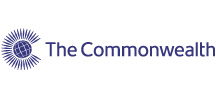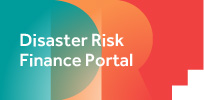Countries Search
Countries
Filters
Filter your search by checking and unchecking the boxes below.
Before or After the disaster?
Own or Transfer the risk?
Instrument type?
Countries
Instruments Available
The ADB Contingent Disaster Loan which is part of their policy-based lending, is a loan provided by the ABD which is linked to a disaster.
A key feature of Contingent Disaster Financing is that it supports essential policy reforms to strengthen disaster preparedness that are to be completed before a natural disaster occurs. Once a CDF is approved for a country, it remains active until a disaster occurs. The country can then quickly access the approved financing to help relieve fiscal constraints for urgent relief and recovery efforts and avoid disruptive reallocations from priority budget programs.
The ADB Contingent Financing Grant is a grant made available upon a soft trigger (for instance, declaration of state of emergency) with a disbursement-linked repayment schedule.
The ADB Contingent Financing Loan is a loan made available upon a soft trigger (for instance, declaration of state of emergency) with a disbursement-linked repayment schedule.
The ADB Emergency Assistance Grant is a standard emergency assistance grant provided by the ADB.
The ADB Emergency Assistance Loan is a standard emergency assistance loan provided by the ADB.
The ADB Normal Asian Development Fund (ADF)/Ordinary Capital Resources (OCR) development loan is a standard development loan provided by the ADB.
Structure: The CCRT has two windows: (i) a Catastrophe Containment window, to provide assistance in containing a public health disaster; and (ii) a Post-Catastrophe Relief window, to provide exceptional assistance in the wake of a catastrophic natural disaster. The windows have different purposes, qualification criteria, and assistance terms.
Catastrophe Containment window:
Qualification: There are two alternative qualifying cases of public health disasters. The first concerns a life-threatening epidemic that has spread across several areas of the afflicted country, causing significant economic disruption, and has the capacity to spread or is already spreading to other countries. Significant economic disruption is defined by at least: (i) a cumulative loss of real GDP of 10 percent; or (ii) a cumulative loss of revenue and increase of expenditures equivalent to at least 10 percent of GDP. The second case concerns a life-threatening global pandemic that is inflicting severe economic disruption across the IMF membership and is creating balance of payments needs on such a scale as to warrant a concerted effort to support the poorest and most vulnerable countries through substantial additional grant support and debt service relief. To qualify for the support, the afflicted country should put in place appropriate macroeconomic policies to address the balance of payments needs.
Debt service relief: Eligible low-income countries that are hit by public health disasters as defined above may receive up-front grants for an initial tranche covering eligible debt falling due to the IMF within a period not exceeding six months. Additional tranches would be approved provided the CCRT has sufficient resources, for a period of up to two years from the date of the initial decision to grant relief.
Post-Catastrophe Relief window:
Qualification: A catastrophic natural disaster that has (i) directly affected at least one-third of the population; and (ii) destroyed more than a quarter of the country’s productive capacity, as estimated by early indications such as destroyed structures and impact on key economic sectors and public institutions or caused damage deemed to exceed 100 percent of GDP.
Debt flow relief: Eligible low-income countries hit by catastrophic disasters as defined above would receive debt flow relief on their debt service to the IMF falling due in the two years following the disaster.
Debt stock relief: Full cancellation of a country’s stock of debt to the IMF is also possible in cases where the disaster has created substantial and long-lasting balance of payments needs and where the resources freed up by debt stock relief are critical for meeting these needs. This would typically only be the case if the country faced a very high debt burden. Debt stock relief would be conditional on concerted debt relief efforts by the country’s official creditors and availability of resources in the CCRT.
The Emergency Response Coordination Centre (ERCC) supports a coordinated and quicker response to disasters both inside and outside Europe using resources from the countries participating in the EU Civil Protection Mechanism.
Grants provided to Red Cross/Crescent National Societies (rather than governments) for emergency relief and all activities which meet immediate needs caused by sudden, slow-onset or imminent disasters, including monitoring and evaluation.
Application guidelines:https://media.ifrc.org/ifrc/wp-content/uploads/sites/5/2020/07/20200511_DREF_Guidelines_ONLINE-_OPT_FINAL-1.pdf
Loans provided to Red Cross/Crescent National Societies (rather than governments) for emergency relief and start-up response to sudden, slow-onset or imminent disasters.
Application Guidelines: https://media.ifrc.org/ifrc/wp-content/uploads/sites/5/2020/07/20200511_DREF_Guidelines_ONLINE-_OPT_FINAL-1.pdf
Medium-term financing for protracted balance of payments (BoP) problems. The Extended Credit Facility (ECF) provides financial assistance to countries with protracted balance of payments problems. The ECF was created under the Poverty Reduction and Growth Trust (PRGT) as part of a broader reform to make the Fund’s financial support more flexible and better tailored to the diverse needs of low-income countries (LICs), including in times of crisis. The ECF is the Fund’s main tool for providing medium-term support to LICs.
Longer term for serious medium-term balance of payments problems because of structural weaknesses that require time to address, the IMF can assist with the adjustment process under an Extended Fund Facility (EFF).
The Flexible Credit Line (FCL) was designed to meet the demand for crisis-prevention and crisis-mitigation lending for countries with very strong policy frameworks and track records in economic performance. This instrument was created as part of the process of reforming how the IMF lends money to countries that find themselves in a cash crunch, with the idea of tailoring its lending instruments to the diverse needs and circumstances of member countries. While none of these countries have so far drawn down on these lines, the FCL provides a valuable backstop and helps boost market confidence during the period of heightened risks.
The global financial crisis highlighted the need for effective global financial safety nets to help countries cope with adverse shocks. A key objective of recent lending reforms was to complement the traditional crisis resolution role of the IMF with more effective tools for crisis prevention. The Precautionary and Liquidity Line (PLL) is designed to flexibly meet the liquidity needs of member countries with sound economic fundamentals but with some limited remaining vulnerabilities which preclude them from using the Flexible Credit Line (FCL).
The Rapid Credit Facility (RCF) provides rapid concessional financial assistance with limited conditionality to low-income countries (LICs) facing an urgent balance of payments need. The RCF was created under the Poverty Reduction and Growth Trust (PRGT) as part of a broader reform to make the Fund’s financial support more flexible and better tailored to the diverse needs of LICs, including in times of crisis. The RCF places emphasis on the country’s poverty reduction and growth objectives. No programme-based conditionality
The Rapid Financing Instrument (RFI) provides rapid financial assistance to all member countries facing an urgent balance of payments need. The RFI was created as part of a broader reform to make the IMF’s financial support more flexible to address the diverse needs of member countries. The RFI has replaced the IMF’s emergency assistance policy and can be used in a wide range of circumstances.
Provide longer-term financing to strengthen economic resilience and sustainability by (i) supporting policy reforms that reduce macro-critical risks associated with climate change and pandemic preparedness, and (ii) augmenting policy space and financial buffers to mitigate the risks arising from such longer-term structural challenges.
The new SBA framework has expanded the range of high access precautionary arrangements (HAPAs), a type of insurance facility against very large potential financing needs. Precautionary arrangements are used when countries do not intend to draw on approved amounts, but retain the option to do so should they need it. In an economic crisis, countries often need financing to help them overcome their balance of payments problems. Since its creation in June 1952, the IMF’s Stand-By Arrangement (SBA) has been used time and again by member countries, and it is the IMF’s workhorse lending instrument for emerging and advanced market countries. The SBA was upgraded in 2009 along with the Fund’s broader toolkit to be more flexible and responsive to member countries’ needs. Conditions were streamlined and simplified, and more funds were made available up front. The new framework also enables broader high-access borrowing on a precautionary basis.
The Standby Credit Facility (SCF) provides flexible financial assistance to low-income countries (LICs) with short-term balance of payments needs. The SCF was created under the Poverty Reduction and Growth Trust (PRGT) as part of a broader reform to make the Fund’s financial support more flexible and better tailored to the diverse needs of LICs, including in times of shocks or crisis.
JICA’s contingent loan linked to a disaster.
Grants extended under this program aim at mitigating the suffering of victims of all kinds of catastrophes around the world, including in Opec Fund for International Development (OFID) Member Countries. OFID emergency aid is channeled through specialized relief agencies, such as the IFRC, UNHCR, UNOCHA and the WFP.
The Pandemic Emergency Financing Facility (PEF) – a financing mechanism housed at the World Bank – is designed to provide an additional source of financing to help the world’s poorest countries respond to cross-border, large-scale outbreaks. The PEF complements the much larger role that IDA, the World Bank’s fund for the poorest countries, and other international organizations and donors play in financing outbreak response. The PEF’s design is unique in that payments can go directly to governments and pre-approved frontline responder organizations (such as WHO & UNICEF) and it can do so through either its cash window — or once triggered through its insurance window.
Start Fund is a multi-donor pool fund managed solely by NGOs for NGOs, with delegated authority from its donors. The fund is designed to disburse rapid emergency funding within 72 hours of an alert. It covers smaller ‘under-the-radar’ emergencies which often received little or no media attention and therefore attract little or no public funding.
Standard loan or grant (depending on country’s circumstances) provided in addition to standard allocations when an exogenous shock occurs. The primary objective of the CRW is to provide IDA countries with additional resources that will help to respond to severe economic crises and major natural disasters and return to their long-term development paths. In case of natural disasters, the CRW targets events that are exceptionally severe. The additional CRW financing would complement UN efforts to provide emergency relief by supporting safety nets for affected populations and restoring basic physical assets that were destroyed by the disaster.
GRiF is a multi-donor trust fund (MDTF) managed and implemented by the World Bank, with initial contributions from the governments of Germany and the UK. GRiF provides grants imbedded as part of World Bank projects to pilot and scale up financial solutions that help countries be financial prepared to respond to climate shocks, disasters, and crises. World Bank projects with GRiF funds are already underway in a number of Commonwealth countries: Malawi, Mozambique, Sierra Leone, and Jamaica.

